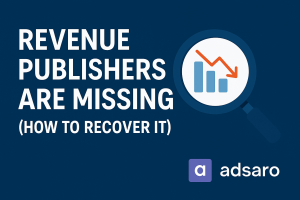In today’s competitive market, brand awareness is more than just a buzzword — it’s the foundation of business success. Without it, even the best products and services can go unnoticed. Building strong brand awareness is essential for making a lasting impression on potential customers and ensuring your business stands out from the crowd. Whether you’re a startup looking to make your mark or an established brand aiming to stay relevant, increasing your brand’s visibility is key to long-term growth. In this blog, we’ll explore effective strategies that will help you boost brand awareness, engage your target audience, and turn visibility into conversions.
Understanding Brand Awareness
Brand awareness is a key metric that reflects how well a brand is recognized by its target audience. It signifies the degree to which customers can identify or recall a brand, its logo, products, or services. Brand awareness is the first step in building a relationship with customers and plays a crucial role in the buying decision process. If your target audience doesn’t know about your brand, they can’t consider or buy from you.
Brand awareness often begins with a visual connection — for instance, when people see your logo or hear your tagline, they should immediately recognize your brand. This recognition can lead to customer trust, engagement, and eventually loyalty.
Key Strategies for Boosting Brand Awareness
There are numerous strategies you can implement to enhance your brand’s visibility. Let’s explore the most effective methods in detail:
1. Leverage Social Media Marketing
Social media platforms are one of the most effective tools for building brand awareness. Here’s how you can use them:
- Create Engaging Content: Regularly post valuable, informative, and engaging content that resonates with your audience. This could be in the form of infographics, videos, polls, stories, or blogs.
- Use Paid Ads: Platforms like Facebook, Instagram, and LinkedIn allow you to run highly targeted paid ads. These ads can help increase your brand’s reach by putting your products in front of people who fit your ideal customer profile.
- Hashtags and Trending Topics: Use trending and relevant hashtags to increase the discoverability of your posts. This helps new audiences find your content organically.
- Interact with Followers: Responding to comments, messages, and engaging with your followers directly builds a stronger relationship with your audience and increases brand visibility.
By effectively using these tactics, your brand can be consistently visible to a large audience, leading to more recognition and trust.
2. Collaborate with Influencers
Influencer marketing has become one of the top methods for increasing brand awareness. Here’s why:
- Established Audience: Influencers already have a large following of people who trust their opinions. By partnering with the right influencers who align with your brand, you can leverage their audience to introduce your products to new people.
- Authenticity: Influencers bring a level of authenticity that paid ads can’t always replicate. Their endorsements of your product appear more natural, and they often lead to higher levels of engagement and trust with their followers.
- Targeted Reach: Influencers typically have niche audiences. This means you can collaborate with influencers who speak directly to your target market, increasing the chances of driving traffic and building awareness among those most likely to convert.
The key is choosing influencers whose followers match your ideal customer profile and creating authentic campaigns that highlight the value your brand offers.
3. Create Compelling Content
Content marketing is one of the best ways to build brand awareness. Here’s how it works:
- Blog Posts and Articles: Writing high-quality content that provides value to your audience can help position your brand as an industry authority. These posts can be shared across various platforms, driving traffic and increasing brand recognition.
- Videos and Tutorials: Video content has proven to be highly engaging. Tutorials, how-to videos, or behind-the-scenes content can humanize your brand and show how your products or services solve customer pain points.
- Infographics and Visuals: Visual content is highly shareable and easy to consume. Infographics can condense complex information into digestible chunks that attract the audience’s attention.
- Consistency: Regularly publishing content keeps your brand top of mind and consistently helps in building recognition over time.
Quality content that answers your audience’s questions or entertains them builds a lasting relationship and keeps your brand visible.
4. Utilize Paid Advertising
Paid advertising can give an immediate boost to your brand awareness efforts. Here’s how to approach it:
- Display Ads: Display ads (banners, video ads) on various websites can help you capture the attention of potential customers while they browse the web. These ads help reinforce your brand’s presence.
- Google Ads: With Google Ads, you can target specific keywords that potential customers are searching for. Your ads appear at the top of search results, ensuring your brand gets noticed.
- Retargeting: Retargeting is an essential tactic to re-engage users who have visited your website but did not convert. These users are already familiar with your brand, and retargeting helps keep your brand at the forefront of their minds.
Paid advertising offers a more controlled, measurable way to reach a wider audience, and when combined with organic efforts, it can lead to significant brand exposure.
5. Engage in Experiential Marketing
Experiential marketing focuses on creating memorable and interactive experiences for your audience. This approach is highly effective for improving brand recognition. Here’s why it works:
- Personalized Engagement: Experiential marketing allows your customers to interact with your brand in real life or virtually. It may involve events, pop-up shops, or live demonstrations.
- Building Emotional Connections: Experiences can evoke emotions that connect customers with your brand on a deeper level. This creates positive associations, helping with brand recall in the future.
- Word-of-Mouth Marketing: When people have positive experiences with your brand, they are likely to talk about it. This leads to organic brand awareness as people share their experiences with friends and followers.
Creating these immersive experiences leaves a lasting impression and builds a loyal customer base who become advocates for your brand.
6. Optimize for Local SEO
For businesses with a physical presence, local SEO can significantly enhance brand awareness within your geographical area:
- Claim Your Google My Business Profile: This ensures your business appears in local search results when people look for products or services near them. A well-optimized Google My Business profile includes your location, contact info, reviews, and opening hours, making it easier for local customers to find and contact you.
- Local Keywords: Use local keywords in your website content, including city names and neighborhoods, to improve your chances of ranking in local search results.
- Customer Reviews: Encourage satisfied customers to leave reviews on your Google profile. Positive reviews not only enhance credibility but also improve your visibility in local search results.
By targeting a local audience, your brand can increase its visibility in the specific area it serves, building a strong, loyal customer base within that region.
Measuring Brand Awareness Success
To evaluate the effectiveness of your brand awareness efforts, focus on these key performance indicators (KPIs):
- Social Media Engagement: Track likes, shares, comments, and overall interaction with your social media posts. Increased engagement often signifies growing brand awareness.
- Website Traffic: Monitor the number of visitors to your website, especially from organic search and social media platforms. An uptick in traffic indicates that more people are discovering your brand.
- Search Volume: Use tools like Google Trends or keyword research tools to measure the search volume of your brand name and related terms. An increase in searches shows rising awareness of your brand.
- Brand Sentiment: Monitor the public’s perception of your brand through reviews, online mentions, and sentiment analysis. Positive sentiment often correlates with higher brand recognition and awareness.
These metrics give you a clearer picture of how well your strategies are working and help identify areas for improvement.
Conclusion:
Incorporating strategic efforts to increase brand awareness is a crucial step towards building a recognizable and trusted business. From leveraging social media to utilizing paid ads and influencer partnerships, there are numerous ways to enhance your brand’s visibility. It’s not just about being seen — it’s about creating meaningful connections that resonate with your audience and foster loyalty. By continuously evaluating your success and refining your approach, you can ensure your brand remains top of mind for potential customers, driving both short-term recognition and long-term growth. With the right strategies, your brand can become a household name in no time.








Leave a Reply